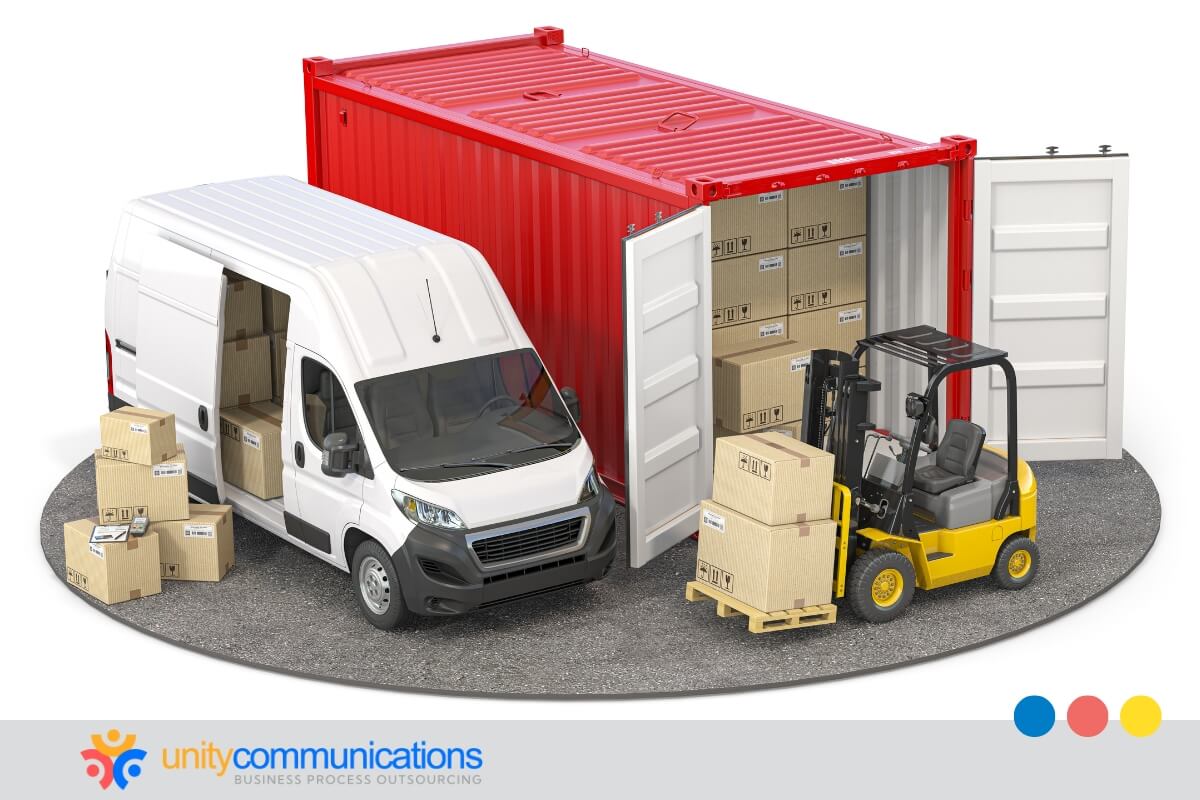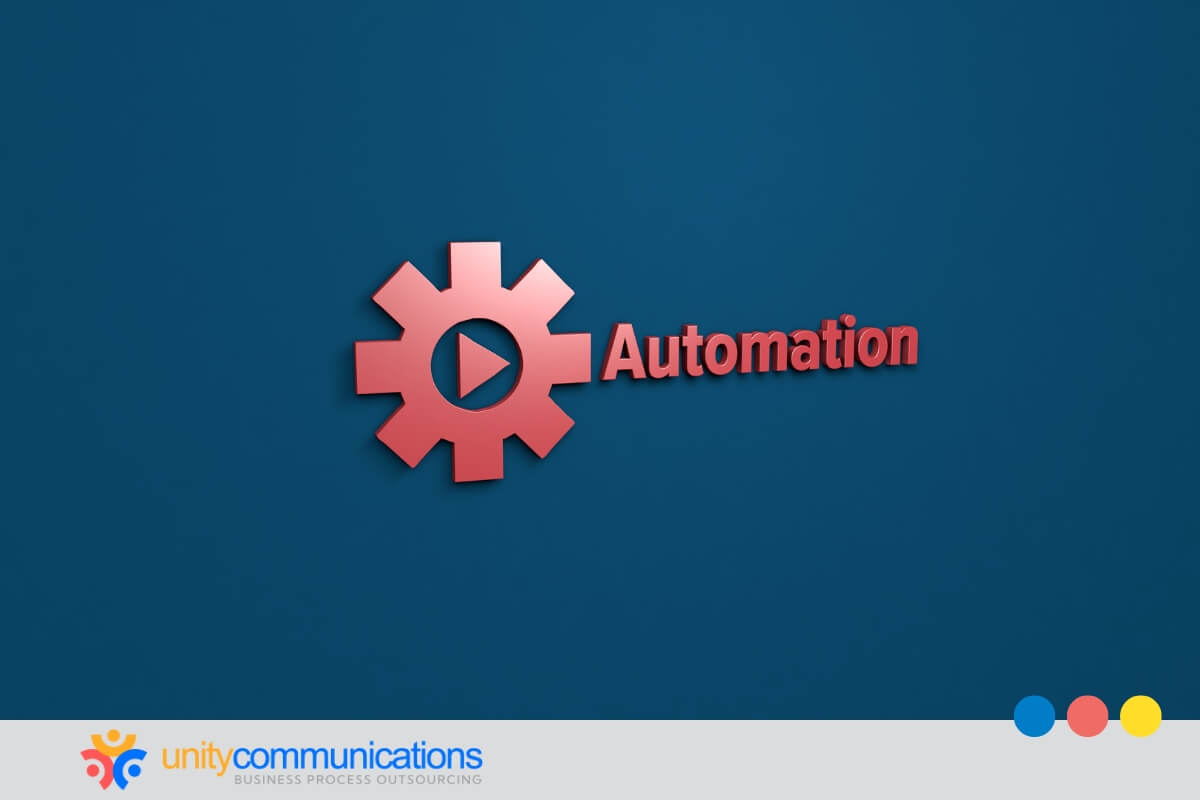Table of Contents
Effective logistics management is essential to staying competitive in today’s fast-paced supply chain environment. Many companies are partnering with business process outsourcing (BPO) providers to cut costs, streamline operations, and gain expert support.
An outsourced logistics model offers scalability, advanced technology, and reduced overhead compared to managing it in-house. When weighing in-house vs. outsourced logistics, understanding the trade-offs is key to choosing the model that best supports your business goals.
Each model offers distinct advantages that align with different business priorities and growth stages. This comprehensive analysis examines both approaches across key decision factors, helping you determine which logistics model is best for your business needs.
What is in-house logistics? Scope, responsibilities, and benefits

When considering in-house vs. outsourced logistics, let us first focus on their scope, responsibilities, and benefits. In-house logistics is managing your entire supply chain internally, from transportation and warehousing to inventory management and distribution. This approach offers complete control over logistics processes, personnel, and workflows.
This model works best for companies prioritizing maximum control, having unique operational requirements, or having predictable, high-volume logistics needs. With logistics projected to be one of the fastest-growing industries from 2023 to 2030, businesses are re-evaluating how they manage their supply chains to stay competitive.
While this model offers more customization and oversight, it also has high fixed costs and is limited in its ability to scale quickly. In-house teams often require significant investment in infrastructure, technology, and labor.
What is outsourced logistics? How third-party providers add value
Outsourced logistics services involve delegating transportation, warehousing, and distribution tasks to external experts. The scope of outsourced logistics can range from handling a single operation to managing the entire supply chain.
With these functions handled by experts, you can focus on core priorities while benefiting from specialized skills and infrastructure. Outsourcing enables companies to leverage specific expertise, advanced technologies, and expansive logistics networks without significant capital investment.
Outsourced logistics is a key example of what BPO is: delegating non-core business activities to external experts. As one of the essential functions of BPO, logistics outsourcing involves third-party providers managing tasks such as inventory control. Its services aim to boost operational efficiency while lowering overall costs.
This model continues to gain popularity across industries. Dimension Market Research forecasts that the global logistics outsourcing market will reach $1.64 trillion by 2033. This growth highlights the increasing reliance on third-party providers to handle critical supply chain functions.
1. CapEx vs. OpEx in logistics: Understanding the cost trade-offs
Cost structure is a significant factor when choosing between in-house and outsourced logistics. In-house logistics typically involve heavy capital expenditure (CapEx). Outsourced logistics shift costs to more flexible operational expenditure (OpEx).
Understanding these differences helps businesses align logistics functions with financial goals.
In-house logistics (CapEx)
- Requires significant investment in facilities, vehicles, technology, and equipment
- Higher upfront costs, but long-term asset ownership
- Fixed costs remain unchanged regardless of demand
Outsourced logistics (OpEx)
- Costs are service-based and vary with usage
- Minimal upfront investment required
- Easier to scale based on business needs
CapEx models suit companies with steady volumes and available capital. OpEx models benefit businesses prioritizing cash flow flexibility and rapid scaling capability. The right choice depends on whether you prefer control and ownership (CapEx) or flexibility and scalability (OpEx).
2. Control vs. flexibility: Which model fits your operations?
Control and flexibility are key factors when comparing in-house vs. outsourced logistics. In-house logistics offers greater oversight, while outsourcing logistics provides agility and scalability.
Choosing the best model depends on whether you need more control or greater agility.
In-house logistics
- Complete control over processes, staff, and technology
- Easier to customize workflows and systems
- Slower to scale or adapt during demand shifts
Outsourced logistics
- Less direct control, but shared responsibility with experts
- Greater flexibility to adjust volume, regions, and services
- Access to the provider’s innovation and process improvements
Choose in-house for maximum control over unique processes. Pick outsourcing for operational flexibility and rapid market responsiveness. Balancing control and flexibility helps align logistics with your long-term goals.
3. Scalability in logistics: How fast can you adapt?
A logistics partner must adapt operations to shifting market demands. In-house logistics might face limitations in rapidly expanding or contracting operations due to fixed assets and internal capacity. By contrast, outsourced logistics offers greater agility through access to broader networks and resources.
In-house logistics
- Expansion requiring significant investment and lead time
- Limited by internal staffing and infrastructure capacity
- Slower to respond to sudden spikes or drops in demand
Outsourced logistics
- Can scale quickly with minimal internal disruption
- Providers offer flexible solutions for seasonal or sudden changes
- Faster to deploy resources across regions or markets
A logistics model that supports rapid scaling and adaptability is essential for staying competitive in dynamic industries.
4. Technology and expertise: In-house vs. outsourced logistics

Knowledge and advanced technologies can affect the efficiency and effectiveness of logistics operations. In-house teams might have limited resources to invest in cutting-edge tools or industry-specific knowledge. On the other hand, outsourced providers bring deep expertise and continually upgrade their technology to stay competitive.
In-house logistics
- Relies on internal staff expertise, which might be limited or require ongoing training
- Requires costly investment in technology
- Might lag behind industry innovations
- Demands costly custom solutions
Outsourced logistics
- Offers access to specialized professionals with extensive industry experience
- Invests in the latest technologies, such as automation and real-time tracking
- Benefits from continuous improvements and best practices shared across clients
Outsourcing can unlock operational efficiency through industry-leading tools and deep supply chain expertise.
5. Customer service impact: How your logistics model shapes satisfaction
The efficiency and reliability of logistics operations directly influence customer service and satisfaction. In-house logistics allow personalized control but might struggle with scalability and responsiveness during peak times. Outsourced logistics providers often offer faster, more consistent service backed by dedicated customer support and advanced tracking capabilities.
In-house logistics
- Provides direct oversight of customer interactions and service quality
- Might face challenges meeting high demand or unexpected disruptions
- Simplifies customization but is dependent on internal resources
Outsourced logistics
- Offers professional customer service teams with 24/7 support options
- Utilizes technology for real-time order tracking and proactive issue resolution
- Can scale support quickly to handle fluctuations in volume
Customer satisfaction depends heavily on logistics performance. Both models offer distinct customer service advantages depending on your business priorities and customer expectations.
6. Logistics risk and accountability: Who owns what?
According to the World Economic Forum’s Global Risks Perception Survey, 66% of respondents identified extreme weather as the leading global threat likely to cause a major crisis in 2024. To prepare for this threat and other major disruptions in your supply chain, you need specialized teams to manage logistics resilience and continuity.
In-house logistics offers direct control over processes, making enforcing internal policies easier and placing full responsibility on the company. Outsourced logistics shifts some risks to the provider. It typically has specialized protocols but requires strong contract management to ensure accountability.
In-house logistics
- Full responsibility for managing logistics internally
- Direct oversight of safety, security, and regulatory adherence
- Retains accountability
Outsourced logistics
- Shares risks with experienced providers who have established mitigation strategies
- Assumes liability for specific service levels under contractual terms
- Requires clear service-level agreements (SLAs) and monitoring to maintain accountability
Choosing the right model also means weighing who manages risk and how well they can handle it.
7. System integration: Which model fits better?
Seamless integration with existing business systems and processes is essential for efficient logistics management. It should be considered when comparing in-house vs. outsourced logistics. In-house models often integrate more directly with internal systems and workflows but might require significant IT resources.
Outsourced logistics providers often offer flexible integration options, though coordination between systems can be more complex and require careful planning.
In-house logistics
- Direct control over system customization and data flow
- Easier to align with company-specific processes and software
- Requires ongoing IT support to manage and update systems
Outsourced logistics
- Offers integration with various platforms, such as enterprise resource planning (ERP) and warehouse management systems (WMS)
- Might require middleware or APIs for smooth data exchange
- Needs clear communication and coordination to enhance integration
Poor integration leads to data silos, manual workarounds, and operational inefficiencies that undermine logistics performance. Successful integration requires precise data requirements, defined communication protocols, and ongoing system monitoring to maintain operational efficiency regardless of model choice.
8. A decision checklist: What’s your optimal logistics model?

Choosing between in-house and outsourced logistics depends on several core factors. Your decision regarding a logistics model should align with business priorities, financial capabilities, and growth objectives.
Use this comprehensive framework to evaluate which approach delivers optimal value for your situation:
- Cost structure and budget flexibility. Evaluate whether your business prefers fixed investments (in-house) or variable, usage-based costs (outsourcing).
- Control and customization requirements. Consider how much direct oversight and tailored processes you need for logistics operations.
- Scalability and the ability to respond to market changes. Assess how quickly your logistics can grow or shrink to meet fluctuating demand.
- Access to technology and specialized expertise. Determine if you require advanced tools and industry know-how that might be more readily available through outsourcing.
- Geographic coverage and network capabilities. Consider whether your logistics provider can efficiently support your current and future market locations.
- Risk management and compliance needs. Ensure your logistics solution can handle regulatory requirements and minimize operational risks.
- Integration with existing systems and processes. Check how well logistics operations will connect with your current business software and workflows.
- Customer service expectations and responsiveness. Decide if you need a logistics partner who can offer high-touch, timely communication and support.
Score each factor based on importance to your business and model fit to determine your optimal logistics approach. Weighing in-house vs. outsourced logistics helps you choose the best strategy for growth and efficiency.
The bottom line
The choice between in-house and BPO logistics depends on your business priorities: control, cost-efficiency, scalability, or specialized expertise. Both models can deliver success when properly aligned with company objectives.
In-house logistics offers customization and direct oversight. Outsourcing provides flexibility, access to advanced technology, and specialized skills. Understanding these trade-offs helps you choose the model that best aligns with your business goals and market demands.
Choose the model that fits your supply chain needs to optimize your logistics strategy. Ready to make a smart shift? Let’s connect today.




